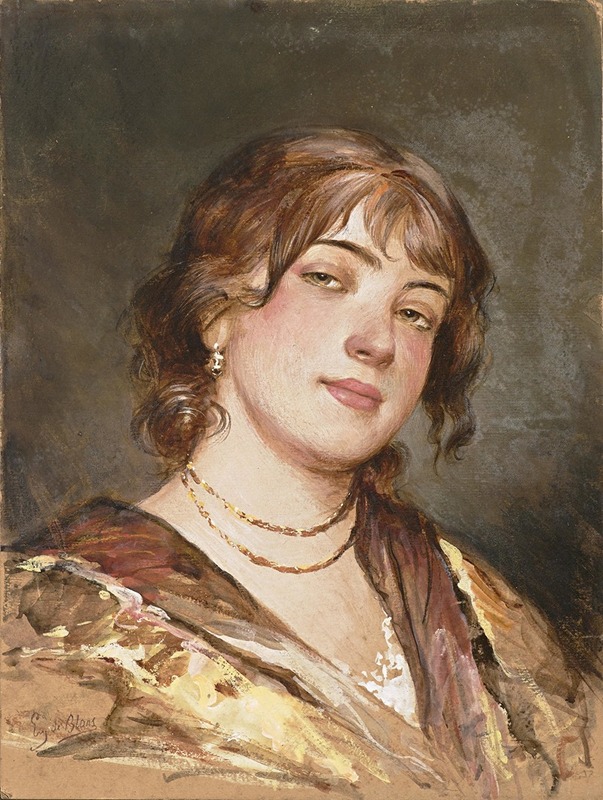
Bildnis einer jungen Italienerin
A hand-painted replica of Eugen von Blaas’s masterpiece Bildnis einer jungen Italienerin, meticulously crafted by professional artists to capture the true essence of the original. Each piece is created with museum-quality canvas and rare mineral pigments, carefully painted by experienced artists with delicate brushstrokes and rich, layered colors to perfectly recreate the texture of the original artwork. Unlike machine-printed reproductions, this hand-painted version brings the painting to life, infused with the artist’s emotions and skill in every stroke. Whether for personal collection or home decoration, it instantly elevates the artistic atmosphere of any space.
Eugen von Blaas, an Austrian painter known for his genre scenes and portraits, created the painting "Bildnis einer jungen Italienerin" (Portrait of a Young Italian Woman). Born in 1843 in Albano, Italy, von Blaas was the son of Karl von Blaas, a noted history painter. Eugen von Blaas was primarily active during the late 19th and early 20th centuries, and he became renowned for his depictions of Venetian life and its people, often capturing the charm and vibrancy of everyday scenes.
"Bildnis einer jungen Italienerin" exemplifies von Blaas's skill in portraiture, showcasing his ability to capture the delicate features and expressions of his subjects. The painting portrays a young Italian woman, characterized by her serene expression and traditional attire, which reflects the cultural and regional identity of Italy during that period. Von Blaas's attention to detail is evident in the intricate rendering of the woman's clothing and the subtle play of light and shadow on her face, which adds depth and realism to the portrait.
Von Blaas's work is often associated with the Academic style, which emphasizes precise technique and adherence to traditional artistic standards. His paintings frequently feature a polished finish and a focus on beauty and elegance, qualities that are evident in "Bildnis einer jungen Italienerin." The artist's use of color is typically vibrant yet harmonious, enhancing the lifelike quality of his portraits and genre scenes.
Throughout his career, von Blaas exhibited his works in various European art capitals, gaining recognition and acclaim for his contributions to portraiture and genre painting. His ability to capture the essence of his subjects, combined with his technical proficiency, made him a sought-after artist among collectors and art enthusiasts of his time.
The painting "Bildnis einer jungen Italienerin" is part of von Blaas's broader body of work that often highlights the cultural and social aspects of Italian life. While specific details about the painting's provenance or current location may not be widely documented, it remains an example of von Blaas's dedication to portraying the human figure with grace and sensitivity.
Eugen von Blaas continued to paint until his death in 1931, leaving behind a legacy of works that continue to be appreciated for their artistic merit and historical significance. His paintings, including "Bildnis einer jungen Italienerin," offer a glimpse into the world of 19th-century Italy, capturing the spirit and character of its people through the lens of an artist who was both an observer and a participant in the cultural milieu of his time.


















